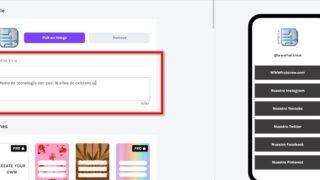
ESENCIAL – Email Marketing: Striking the Right Balance between Promotion and Spamming
Email marketing is a powerful tool to reach potential customers and maintain a close relationship with existing ones. However, it’s important to avoid the temptation of turning our emails into spam and losing our credibility with the recipients.
- Sent only to those recipients who have actually given their consent. Every unwelcome email is understood to be spam. The majority of emails that users flag as spam come from reputable sources.
- Clean up your data base. Maintain confidentiality with your emails and regulate the frequency of publications. Remember that the money is on the list and can be used however you see fit.
- Creates high-quality content. According to BtoB, 47% of marketers have improved the effectiveness of their email marketing campaigns by providing relevant content. In 2012, businesses invested 1.5 billion dollars in email marketing. The ROI obtained per dollar in 2011 was calculated to be 40.56 dollars.
- Offers useful content that is specifically directed at the recipient through personalized emails. The most effective personalization of the message’s content is now possible thanks to modern technologies, providing each recipient with a singular experience.
- Gives recipients the option to opt out of the subscription in a prominent location. By doing this, you’ll prevent them from marking your message as spam due to its impossibility to drop it. The 68% of users that responded to the emailing did so favorably. Be responsible with your communications and respect the choices of those who are not interested in what you have to say.
When is the best time to carry out these mailings?
First and foremost, we need to ensure that our email lists are up-to-date and relevant to our business. There’s no point in sending messages to people who aren’t interested in our product or service, as they will likely consider it spam.
It’s also important to be clear and direct in the email subject line. It should reflect the content of the message and pique the recipient’s curiosity. For example, instead of writing «Spring Promotion», we can write «Save 20% on Gardening Products to Spruce Up Your Home This Spring!».
In addition, we need to pay attention to the content of the email. It should be engaging, relevant, and easy to read. Use images and colors that highlight your products or services, and make sure the text is clear and concise. It’s also a good idea to include a call to action so that recipients feel motivated to take a specific action, such as visiting your website or making a purchase.
Where do these emails originate?
Another point to consider is the frequency of email sends. We don’t want to overload our recipients with constant emails, but we also don’t want to send them so infrequently that we lose their interest. Generally, once a week or every two weeks is a good rule of thumb.
Overall, email marketing can be an effective way to promote our products or services and maintain customer relationships, as long as we are mindful of the line between promotion and spamming.



